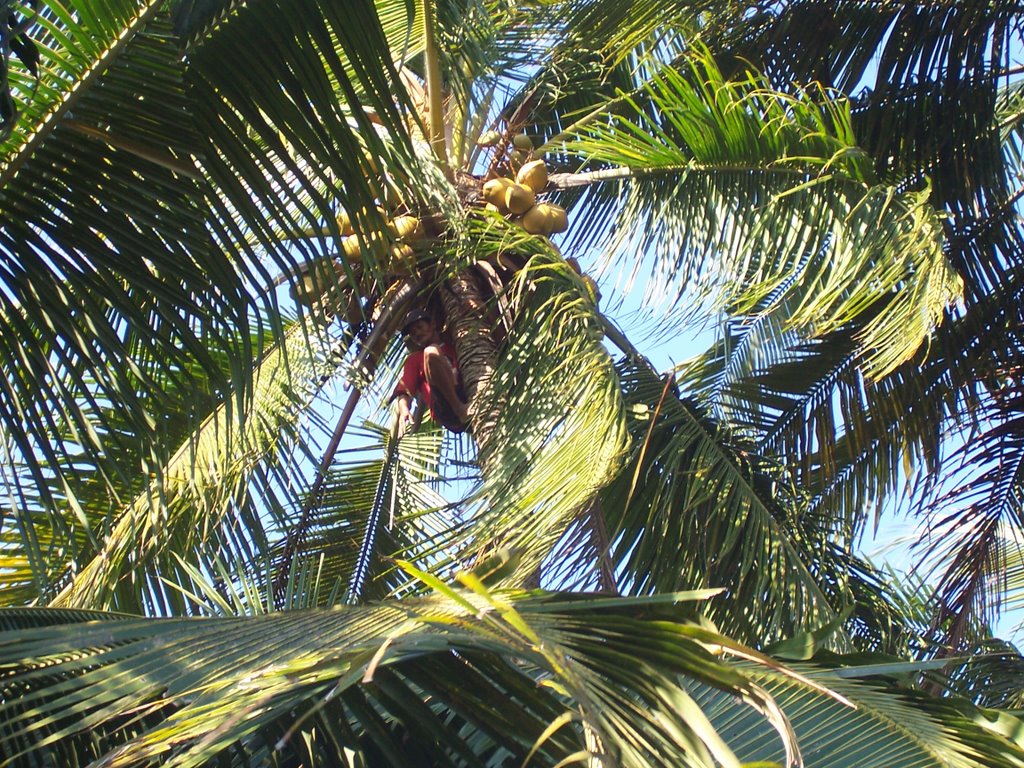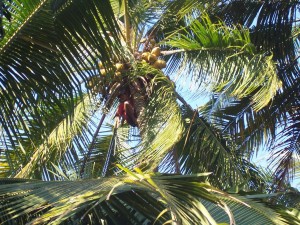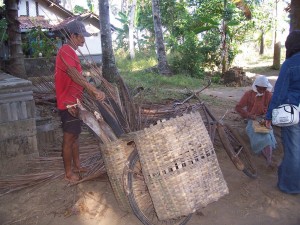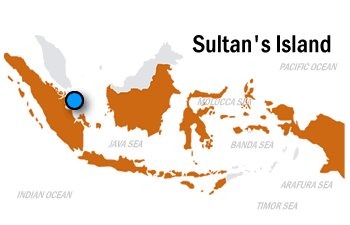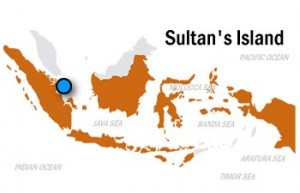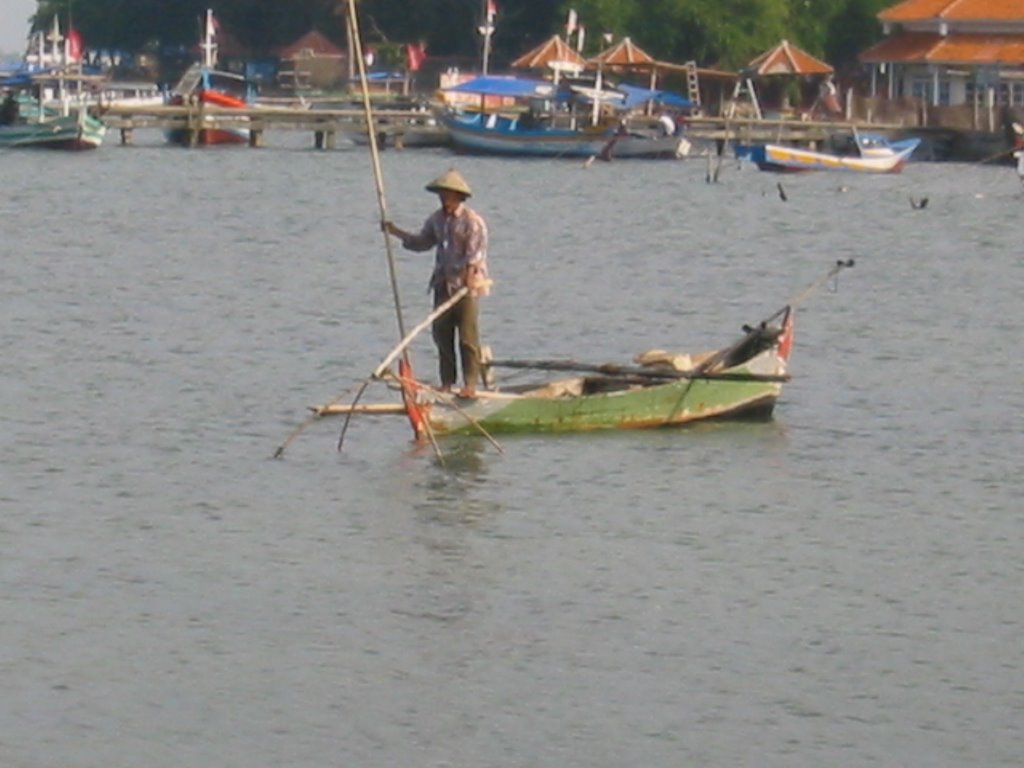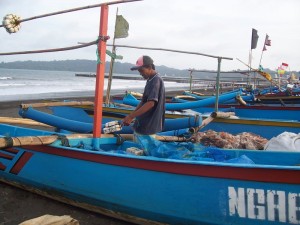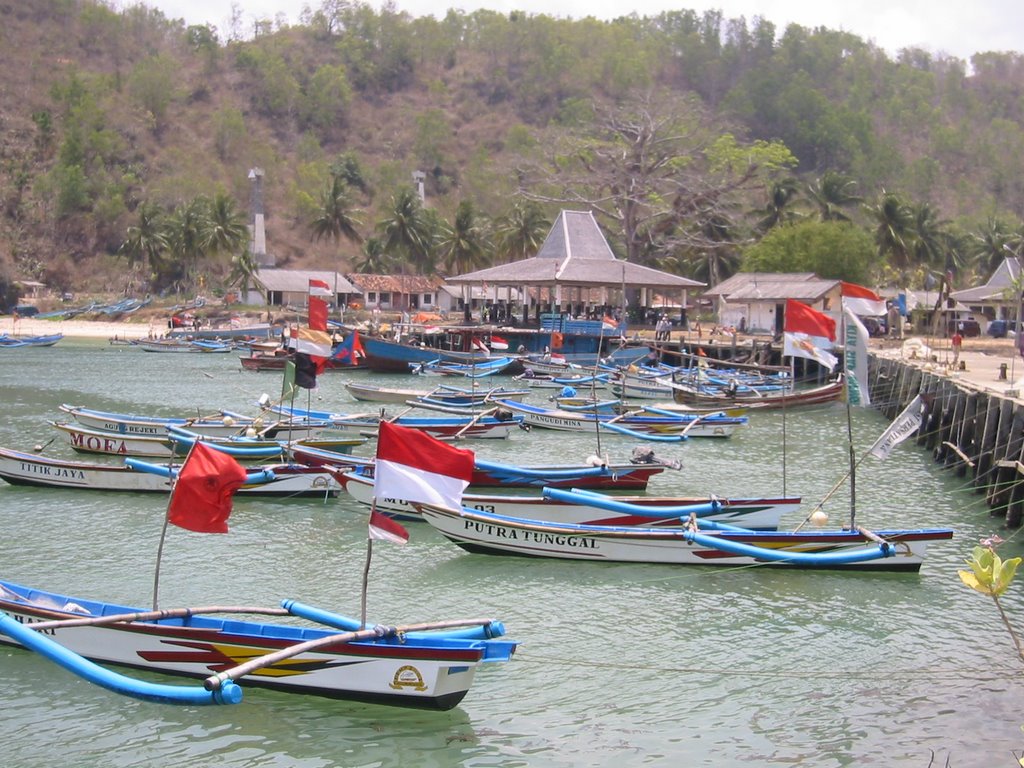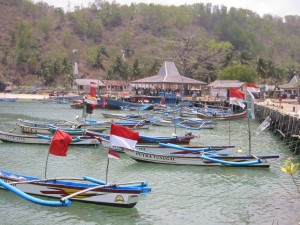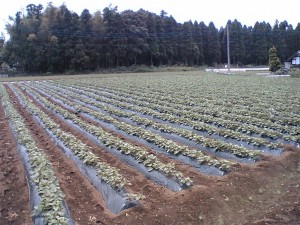
Summary of Chapter I of the Agricultural Development of Japan: a Century’s Perspectives, by Hayami, Y. and S. Yamada, 1991, University of Tokyo Press.
Agriculture in this discussion only covers the farm sector and does not include forestry and fishery. The analysis based on the historical statistic data, recorded since early of Meiji Era (1868) up to 1985, to determine the changes or the trend in agriculture growth in term of agriculture product, input, and productivity in the modern Japan.
The Japanese agriculture chronologies might be ascertained as follows: 1) Period I, approximately 1880-1990, we may called steady growth; 2) period II, 1900-20, accelerated growth; 3) period III, 1920-35, relative stagnation; 4) period IV, 1935-45, devastation by World War II; 5) period V, 1945-1955, postwar recovery; 6) period VI, 1955-70, rapid growth; and 7) period VII, since 1970, stagnation. For a broader phase, the period I and II we may call “initial growth phase”; period III as “interwar stagnation phase”; period V and VI as “postwar growth phase”; and the last period as “recent stagnation phase”. Those chronology and phase will be explored in this brief summary of this chapter.
Agriculture in Economic Development
The shift pattern of economic development from rural based to industrial based primarily occurred in the Meiji era. In the early of Meiji era, agriculture share predicted around 69% of total workers around 21.86 million people, to only 8.7% in 1985. While agriculture shares to total NDP decreased to only 3.9% in 1985, from 38.4% in the early of Meiji era. The rapid decreasing rate was occurred in the period after World War II (in average more than 20% per year), particularly in the period between 1950’s-1960`s in which industrialization and economic growth develop rapidly. As a result, Japan economic has shifted from predominantly rural country to the one of the most highly industrialized nation in the world.
Trend in Agriculture Output
The trend analysis includes the growth in aggregate output and production by commodity groups. Figure 1-1 (page 18) and Table 1-2 (page 19) indicated the trend in total production, total output, gross and net value added. Based on the data, the growth trend as previously mentioned might be divided into seven periods, but to simplify the agriculture output growth were categorized in four major phase. They are: (a) relative rapid growth until the 1910`s, (b) relative stagnation in the interwar period, (c) a spurt following World War II up to the 1960s, and (d) stagnation in the 1970s and 1980s. The first phase was indicated by relative fast growth of total production and output that reached 20% and 25%, respectively. Even the growth of gross and net value added though less clear in this period, this rapid growth parallel to industrial growth. Fortunately, in the second phase the agriculture entered the stagnation phase, even the industrial sector continue to expand, in that the agriculture output declined to more than 50% compared to previous phase. The shortages in labor and other input for agriculture due to the military expansion to China and followed by the pacific war might become some reasons a sharp declined of the agriculture performance. The rapid growth of agriculture, called a spurt, was occurred again after devastating by World War II up to 1960s in which the total production and output far above the prewar period. As the structural adjustment to industrial country, particularly in the year 1970s-1980s, the agriculture output shift again to a distinct stagnant in that total production, output, and value added decreased to more than 70% compared to other period after World War II. Moreover, in the postwar period, the increases used of non-farm input (fertilizers, machinery, etc.) and fixed capital drove the total agriculture product and output growth more rapid compare to its gross and net value added.
Similar to the overall agriculture output, by the commodity, we might be also sequenced the commodity output growth into four phases as previously discussed. However, as a great important commodity, rice, even yearly grew slowly, the major determinant of the growth pattern of total production. In contrary, livestock even become a critical component to determine the total production in the postwar period (grew 9% per year); it was started from negligible level in the prewar period. In addition, the sericulture growth rapidly from the early period of Meiji Era until 1920s, but continued to decrease after this period. The world depression and the competition from artificial fibers might contribute to the decreasing trend of sericulture. Thus, sericulture finally reduced to such low level and might affect the aggregate growth rate.
Labor and Land in Agriculture
Labor and land is very important factor in agriculture development in Japan. The number of labor decreased slightly, at the average rate of 0.1% per year, for the entire prewar period. Even the number increased immediately after World War II, it began to decline sharply with the outset of the rapid economic growth in the mid 1950s. According to their workhours, for period 1880-1920 the number of workhours rose by 36%, while the number of farm workers decreased by 5%. Due to the double cropping paddy field practices and expansion into sericulture as sideline enterprise to the production of staple cereals resulted the increasing in workhours per worker of 42%. Nevertheless, after 1920 the workhours tend to move parallel to number of workers, then followed by sharply declined in the postwar period, particularly in the rapid economic growth period from 1960s to 1970s.
Similar to labor state, the cultivated land or cropland also increased steadily at the average 0.5% until 1920, then stagnant that after. Moreover, the rate of land utilization has been sensitive to changes in the demand and supply of farm labor. As the land become the limiting factor, the productivity of land and labor are two important factors generated the growth of agriculture in Japan. The major element in explaining the increase in output per farm worker was the rise in yield per hectare for the prewar period and the postwar period until 1955 in which 70% of the growth in output per worker is accounted for by the increase in output per hectare. However, the contribution of improvement in cultivated land area per worker to the labor-productivity growth rate has become the major element since 1955, when the absorption of the agricultural labor force by industrial and service sector accelerated. In other words, in the postwar period the improvement in the land/labor ratio played a significant role in the growth of labor productivity when the labor input sharply declined.
Factor Input, Factor Price, and Factor Shares
Agricultural production factors in this discussion classified into four categories i.e. land, labor, fixed capital, and nonfarm current input. Over the whole period, the inputs of the two primary factors, labor and land, and capital changed slowly relative to nonfarm current inputs in the prewar periods. However, in the postwar period capital increased, while labor decreased, both at rapid pace, reflecting the rapid progress in farm mechanization. The rates of growth in current inputs, particularly fertilizer in the prewar period, and feeds in the postwar period, far exceeded those other inputs. Related to the factor price, the rapid rise in the price of the farmland for the prewar period indicated the fact that land was the limiting factor for agricultural production in this period. While the rapid rise in the farm wage rate in the postwar period implies that labor has becoming the increasingly scarce relative to other factors in recent years. The rapid decline in the price of fertilizers relative to the price of land can be identified as a major force that induced the substitution of fertilizer for land, thereby increasing the input pf plant nutrients per unit of farmland area. Likewise, it is clear that the relative decline in the price of machinery capital vis-a-vis the farm wage rate has been a stimulus in the substitution of machinery for the labor. In other words we can said that the technical progress in Japanese agriculture was of the land-saving and fertilizer-using for the prewar period and that it began to bias toward the labor-saving and machine-using direction when labor shortage became serious after around 1960.
Total Input and Total Productivity
The total input in this term is the aggregate of single index of labor, fixed capital, and nonfarm current inputs by factor-share weights, and expressed as chain-linked index. While the total productivity defined as the index of total output divided by the total input and expresses the technical efficiency or the changes of output per unit of input in agricultural production. Over the whole period, the indices of total input in both flow and stock term increased at the annual rate 0.4% while total output grew at 1.6%. Consequently, total productivity rose by 1.2% per year in both terms. This implies that roughly, 1/4 of the growth of total output is explained by the growth in input, or 3/4 output growth is left unexplained by increase in conventionally measured inputs. Even though, there were large variations among periods in the rate of growth in total productivity as well as its relative contribution to the output growth rate (Figure 1-13). The increase in the rate of output growth from period I to period II was associated with the rise in the input growth rate, but through period I and II, productivity growth was the dominant factor in determining the growth rate of the total output. The interwar stagnation in the period II and III might well explain the deceleration in the rate of growth in productivity in this period. In period IV, the performance declined significantly due to the devastation of World War II, even followed by the high rates of output growth in the period V and VI. However, the output growth in period V for recovery from the war was largely explained by the increase in inputs, the output growth in period VI is largely explained by a rise in productivity. From period VI to VII the growth decelerated significantly. Labor and land inputs continued to decrease through out period VI and VII. Even the capital and nonfarm current inputs increased rapidly in period VI, slowed down markedly in the period VII. The growth rates of total productivity declined by 30 to 50% from period VI to period VII. Thus, the stagnation of output in agriculture was the combined effect of decrease in input use and deceleration in technical progress.
Recapitulation of Major Growth Trends
Even the agriculture performance rose and down since the beginning of industrialization in early of Meiji era until recently, in average the agriculture growth positively in average 1.5% per year. Field crops, particularly rice, continue to dominate the Japanese agriculture, even we also found the rise and fall in sericulture and the rapid increases of livestock after World War II. In contrast to output growth, the two primary inputs in agriculture, labor and land, remained stable. Since the land/labor ratio improved only slightly, the growth in labor productivity was primarily brought about the rise in the use of fertilizers and other current inputs, which are primarily substitutes for land. The improvement of land/labor ratio has become the major component in the growth in labor productivity since the beginning of the rapid economic growth in the mid-1950s. Moreover, the growth in land productivity was associated with the rapid increase in the use of fertilizers and other current inputs, which are primarily substitutes for land. While the improvement in the land/labor ratio was associated with an increase in capital stock, particularly in the form of machinery and implement per worker, which are primarily substitutes for labor.
An International Comparison
As a comparison, some countries in Asia, USA (continent region), and Netherlands (Europe) were selected to describe the relative levels of output, input, productivity, the land-labor ratio, and their historical trend. According to their land-labor (Table 1-15), Japanese land-labor is only 1.2 ha per person, similar to other Asian countries, but it is 100 times in larger in the USA and only 7 times larger in the Netherlands. Moreover, the labor productivity of Japanese agriculture is also lower, only 1/12 of the USA and 1/10 of the Netherlands in terms of both total production and gross value added. Even though, the labor force declined in all three countries for over a century since 1880. The average growth rate of total output in both Japan and the USA was 1.6% per annum, while the Netherlands achieved much higher rate of 2.6%. While labor increase 0.3% per annum in USA and Netherlands, in Japan decrease 0.1% due to the unfavorable land endowment in that rural population migrate to town even in the early stage of industrial development. After World War II, the output growth rate decreased sharply in Japan from 3.2 to 0.5% per year, while it remained about the same in other two countries (Table 1-17). The rate of growth in land productivity also decreased significantly from 3.1 to 1.2% in Japan, while it increase from 1.8 to 2.5% in the USA, and remained at about 4% in the Netherlands. Similar characteristic also figured out on the total productivity in which decreased 2.4 to 1.2% per year in Japan, while it remained about 2% in the US. Compared to the other Asian countries, in which most of them experienced with the Green Revolution, the output growth rates in Japan is similar to some countries such as Indonesia, India, and Pakistan, even lower compare to Taiwan, Korea and Philippines. Even though, in perspective of labor, the newly industrializing countries such Taiwan and Korea have the same figure with Japan in which the labor absolutely decline, even in differences rate. Nevertheless, in other Asian countries the labor still increasing, resulting the decreasing on land-labor ratio. While total productivity improved in all countries but the rates different from country to country.
To summary the international comparison, the Japanese agriculture has shown a good performance in the prewar period, in most of indicators better than USA, even the Netherlands. How ever, since the post war particularly after 1970 Japanese agriculture has lagged behind the two countries in out put and productivity growth rates, even lower than in many other Asian countries. Thus, protection has characterized the Japanese agriculture recently.
(Picture: Horticulture in Ami-machi, Ibaraki, Japan)
Let`s share knowledges, sciences, and experiences
Technology, Partnership & Equality




